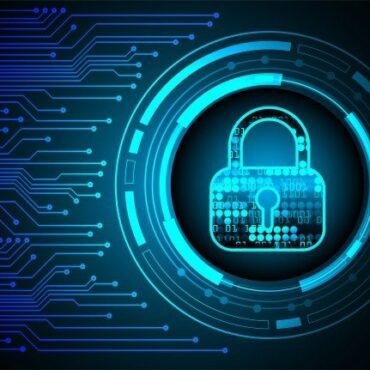The Role of Digital Forensics in Cybercrime Investigations
In an age dominated by technology, cybercrime has emerged as one of the most pressing threats to individuals, organizations, and governments. From data breaches and identity theft to ransomware and financial fraud, cybercriminals are leveraging digital tools with increasing sophistication. To combat this wave of crime, digital forensics has become a cornerstone in modern investigations.
Digital forensics involves the collection, preservation, analysis, and presentation of digital evidence. It empowers law enforcement, investigators, and legal professionals to uncover digital footprints, trace cyberattacks, and present findings in court. In this blog post, we explore the vital role of digital forensics in cybercrime investigations, the tools used, techniques applied, challenges faced, and real-world case studies that highlight its impact.
What is Digital Forensics?
Digital forensics, also known as computer forensics, is a branch of forensic science focused on recovering and investigating material found in digital devices. It includes examining computers, mobile phones, cloud storage, networks, USBs, and even IoT devices.
The goal is to:
This process is vital in cybercrime cases, where digital traces are often the only evidence available.
Types of Cybercrimes Investigated Using Digital Forensics
Digital forensics supports a broad spectrum of cybercrime investigations, including:
-
Hacking and Unauthorized Access
-
Phishing Attacks and Email Scams
-
Ransomware and Malware Infections
-
Identity Theft and Financial Fraud
-
Child Exploitation and Abuse
-
Insider Threats and Corporate Espionage
-
Intellectual Property Theft
-
Cyberbullying and Harassment
Each case requires specialized forensic methods to identify suspects, uncover how the attack happened, and support legal proceedings.
How Digital Forensics Helps Law Enforcement
1. Evidence Recovery
Forensic experts use specialized tools to recover deleted, encrypted, or hidden data from suspect devices. This can include emails, browser history, files, and logs.
2. Attribution and Tracking
Digital forensics helps in tracing IP addresses, user activity, and device usage to identify the perpetrator. Techniques like packet analysis, log correlation, and malware analysis are used to build timelines and profiles.
3. Maintaining Chain of Custody
Digital forensic procedures ensure that evidence is collected and handled in a way that maintains its legal integrity. This is crucial for courtroom admissibility.
4. Reconstructing Events
Timeline analysis allows investigators to piece together the sequence of actions taken by cybercriminals, revealing their intent and impact.
5. Testimony in Court
Forensic investigators often act as expert witnesses, presenting technical evidence in a manner that judges and juries can understand.
Tools and Techniques Used in Digital Forensics
Common Digital Forensic Tools:
-
EnCase Forensic – Used for disk-level investigations
-
Cellebrite UFED – Specialized in mobile device forensics
-
Magnet AXIOM – Combines computer, mobile, and cloud data analysis
-
Autopsy/Sleuth Kit – Open-source tool for file recovery and analysis
-
FTK (Forensic Toolkit) – Known for email analysis and hashing
Techniques:
Digital Forensics Process in Cybercrime Investigations
-
Identification – Recognizing that an incident occurred and identifying sources of evidence
-
Preservation – Creating forensic images to protect original data
-
Analysis – Examining and interpreting the data for patterns or proof
-
Documentation – Keeping detailed records of every action taken
-
Presentation – Compiling findings into a report and preparing for legal testimony
Real-World Case Study: Ransomware Attack on a Hospital
A regional hospital experienced a ransomware attack that encrypted patient records. Law enforcement and digital forensic teams were called in.
-
Step 1: Cloned the affected systems to preserve evidence.
-
Step 2: Analyzed logs and discovered entry through a phishing email.
-
Step 3: Retrieved deleted email attachments and payload files.
-
Step 4: Traced the malware origin to a remote server in Eastern Europe.
-
Step 5: Coordinated with Interpol and arrested the suspect.
This case highlights how digital forensics can turn technical clues into actionable leads.
Challenges in Digital Forensics
-
Encryption and Obfuscation – Advanced encryption tools make evidence inaccessible.
-
Volume of Data – Terabytes of data slow down investigations.
-
Cloud and Remote Storage – Gaining access to third-party platforms is complex.
-
Constantly Evolving Threats – New malware and techniques require ongoing training.
-
Privacy and Legal Boundaries – Investigators must follow strict protocols to avoid violating rights.
Why Digital Forensics is Crucial for Cybersecurity
-
Incident Response: Helps organizations quickly detect, analyze, and respond to breaches
-
Compliance: Supports audits and adherence to data protection laws
-
Risk Mitigation: Identifies vulnerabilities and prevents future attacks
-
Legal Proceedings: Supplies evidence necessary for prosecution
Digital forensics doesn’t just react to cybercrime—it proactively strengthens cybersecurity posture.
The Role of Training and Certification
To stay ahead, professionals pursue certifications such as:
-
CHFI (Computer Hacking Forensic Investigator)
-
EnCE (EnCase Certified Examiner)
-
GCFA (GIAC Certified Forensic Analyst)
-
CCE (Certified Computer Examiner)
Institutes like Hawk Eye Forensic in Delhi offer hands-on training using industry-grade tools like Cellebrite, EnCase, Magnet AXIOM, and more.
Future of Digital Forensics in Cybercrime
-
AI and Automation: Speeds up analysis of large datasets
-
Blockchain Analysis: Tracks crypto transactions used in cybercrimes
-
IoT Forensics: Extracts data from smart devices
-
Cloud Forensics: Handles decentralized data across providers
-
Mobile Device Forensics: Continues to evolve with encrypted apps and hidden partitions
Conclusion
Digital forensics is indispensable in today’s fight against cybercrime. Whether it’s tracking down a hacker, recovering stolen data, or presenting evidence in court, forensic investigators play a vital role in achieving justice. As cyber threats grow more sophisticated, so must our tools and knowledge.
For individuals seeking to contribute to this crucial field or organizations aiming to protect their digital assets, investing in digital forensics capabilities is no longer optional—it’s essential.
Need expert help or training in digital forensics?
Visit www.hawkeyeforensic.com to explore our professional investigation services and industry-based cyber forensic courses.





Post comments (0)